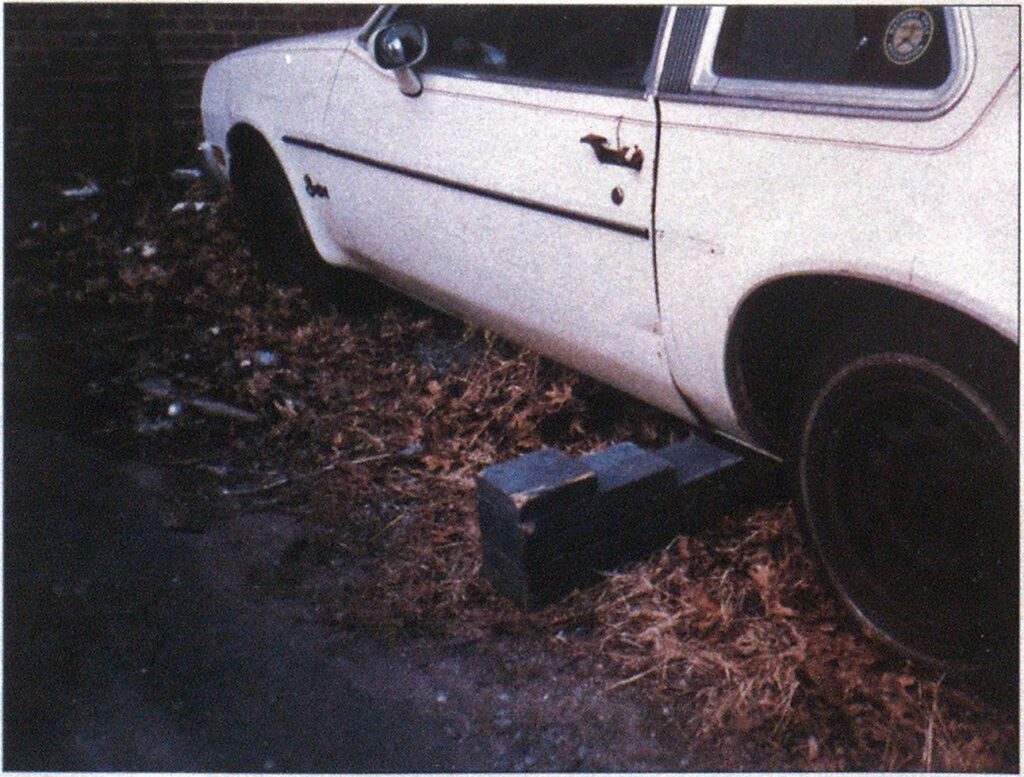
CHOCKS, BLOCKS, AND CRIBBING
THE RESCUE COMPANY
Our first experience with using blocks, chocks, or cribbing in the fire service is usually the “door chock.” Training schools impress upon us the importance of carrying a door chock at all times. Fire conditions can change rapidly, forcing you to abandon a search and bail out—and you better have chocked that apartment door or you might not be able to find your way out. Panic is an understatement for that feeling of not being able to find the right door quickly enough or thinking you found the hallway door only to discover it’s a closet door. If you have one such experience, you will never forget a door chock again.
CHOCKS
As a company officer in a busy area, I always made sure I carried at least two chocks as part of my equipment. Searching for the fire location while members are stretching a line, 1 always felt a sense of security having that door chocked opened so I could find my way back quickly. 1 even thought of inventing a paint that would make the chock glow brighter in the smoke. A specially painted chock also would indicate to other firefighters that a member was in the apartment searching.
Chocks come in a variety of sizes— from the smaller door size of four to six inches long to a larger size of 12 to 18 inches long. Tapered from one end to the other, they fill spaces or snug up areas or objects that require stabilization. They are used frequently in vehicle stabilization, collapse and shoring operations, and elevator, train, and railcar incidents.
Step chocks are similar to tapered chocks. They are various lengths of two-by-six-inch wood secured together like a set of steps. Designed to fit under a vehicle without the need for additional chocking, they provide a very secure stabilization point.
At all operations, the chocking of vehicles begins with our own apparatus. Most department regulations require the wheels of all apparatus to be properly chocked when parked at an operation or during inspectional activities. Many rescue units have designed various types of chocking devices based on those used on apparatus.
BLOCKS
Blocks are also a very important part of every rescue operation. During vehicle extrication operations they often are used to support the tool in service, to gain additional height, and to provide a leverage point. Blocks also can be used inside a vehicle as a supporting base for extension rams or they can be used to fill space for a spreading device.

(Photos by author.)
THE RESCUE COMPANY
CHOCKS, BLOCKS, AND CRIBBING
Blocks can play a very important role during collapse rescue operations. Using blocks or chocks to support a load or area around an obstruction prior to cutting the obstruction away will prevent a secondary collapse.
During rescue operations all loads that need to be lifted, moved, shifted, or displaced must be supported. Using the various types and sizes of blocks carried by rescue units will help ensure the safety of both rescue workers and victims. When using air bags, blocks designed to fit individual-size bags or cribbing can provide a firm supporting base and additional height and protect the bags from damage from sharp or pointed objects. Having an area of support covering the complete bag will also prevent wraparound, which can happen when the blocking or cribbing surface is smaller than the air bag that is selected for use.
CRIBBING
Cribbing is used to support loads, in vehicle stabilization, or as a base for air bags. Cross-tie cribbing is made up of blocks or timbers stacked in alternate directions. The blocks or timbers should be the same thickness and the area under the cribbing must be level.
Pictures of the devastation caused by the October 1989 California earthquake clearly show how important cribbing is in rescue operations. Many areas of Interstate 880 in Oakland had to be supported with large shoring timbers that required a crane for lifting and placement. Of course, rescue companies can’t carry shoring materials of that size. But regardless of the size of the load it is necessary to support it with cribbing, blocks, and chocks.
INVENTORY
What size chocks, blocks, and cribbing should rescue units carry? This depends on the space available for storage on the apparatus. If a central storage location or specialized apparatus is used for this equipment, then a larger inventory and a greater variety will be possible. Generally most units use two-by-four-inch or four-byfour-inch wood of various lengths. Standardizing sizes by lengths (12″, 18″, 24″, and so on) will help make storage easier and provide the uniform size and shape necessary’ for effective and safe cribbing.
Hardwood such as ash, birch, oak, and hickory provides the hardness and strength needed for rescue operations. Next time you are at the lumberyard, ask the proprietor about short or cut pieces that may be in the scrap pile—they could become part of your inventory. Leave the wood unpainted so the surface does not become slick when wet. You can paint the ends—color coding will help you to identify the different sizes, types, and lengths easily. Drilling a hole through the width of the end of a block will provide a means for securing a rope handle for easier carrying and will not interfere with stacking.
Keep a list of the various sizes, types, and amounts in stock (you can attach the list to the door of the compartment used for storage) to provide an inventory and assist you during maintenance duties. It is often necessary to leave these blocks or chocks in place at an operation, so such an inventory also will account for misplaced or lost equipment.
Never underestimate the value of chocks, blocks, and cribbing. They can be used very effectively to support loads, jacks, air bags, and equipment and for shoring, spreading, and bracing. One day they may save your life.



